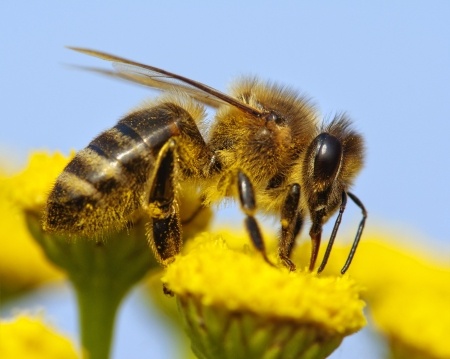Varroa Mites Hopping from Flower to Bee
January 06, 2017
Bee Colony Collapse, Honey Bees, Honey Industry
Cornell University researchers have recorded the first ever footage of varroa mites jumping onto honeybees from flowers, as per a study published in the journal PLOS ONE. Varroa mites are known to threaten honeybees and are often found in a hive’s larvae or pupae. The footage shows a varroa mite hopping onto a honeybee from a flower. "No one has ever shown that bees flying naturally and freely, arriving at flowers and then leaving as they wished, presented a large enough opportunity for varroa mites to make these jumps," said David Peck, a Cornell graduate student and the study’s lead author.
To discover whether flowers were the origin of contact for varroa mites, Peck and his colleagues placed the mites on flowers and watched what happened to the honeybees in the process. From the flower, each mite could jump on the corresponding honeybee. "A noteworthy result that we didn't originally expect was that once the mites get onto the bees, they show some pretty sophisticated behaviors to avoid getting groomed off," Peck said.
Once they attach, the mites then retreat to a place where the honeybee cannot reach, such as its back. After they latch onto the forager, the mites gravitate towards nests and the bee larvae within the hive. Scientists believe their findings should raise alarms about parasites spreading further via the shipping of flowers. "If a mite could jump from a flower onto a bee that tried to visit one of these flowers at an open-air flower market, the result could be disastrous," Peck said.
Varroa mites are a major concern when it comes to honeybee populations, infesting their colonies worldwide. The tiny parasite feeds on adult and larva bees and make the pollinators more prone to other infections and illnesses, such as deformed wing virus (DMV), a disease that can render a bee’s wings useless and ultimately jeopardize its lifespan. If an infestation is severe enough, the parasites can cause a hive to collapse, which is commonly referred to as colony collapse disorder (CCD). This phenomenon, while still enigmatic when it comes to its origin, is known to threatens bee populations and is just one of many stressors against them.
After publishing the study, Peck suggested that spraying flowers with organic pesticides could prevent the predicted consequences of the varroa mites’ ability to hop from flowers to bees. He also suggested that restricting certain shipments of flowers in other settings could also prevent any other potential threats.
Copyright: prudek / 123RF Stock Photo


.jpg)




